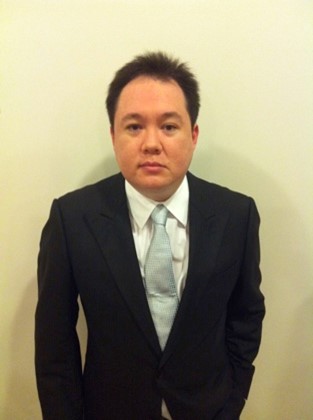
In some commercial dealings, one of the most significant considerations, especially with respect to persons who are paying money (hereinafter the “Payer” or “settlor”), is whether the person who receives the money (hereinafter the “Payee” or “trustee”), will account for the money, and if the Payee becomes insolvent, what is the Payer’s recourse. If the Payee fails to apply the funds in accordance with the instructions of the Payer, can the Payer sue the Payee? The gist of this note is that if there is a suitable arrangement, this may result in the form of a ‘Quistclose Trust’ (the eponymous trust is derived from Barclays Bank v Quistclose Investment Ltd [1970] A.C. 567), and then the Payee may be held accountable as a trustee. The trustee’s liability as a trustee is personal for diminution or proprietary of the inflation of the value of the capital. When there is a breach of fiduciary duties, or, if the circumstances would satisfy the necessary equitable requirements, there may be remedies such as tracing of funds to third parties or other equitable relief such as constructive trusteeship for knowing receipt or dishonest assistance. It is submitted that the gamut of relief against the Payee, as a trustee of a properly constituted trust, is efficacious. This note shall consider some of the concepts concerning the Quistclose Trust, in the context of commercial dealings.
The loan contrasted with a trust: Certainty of intention
One of the requirements of a trust is that the settlor’s intention to create a trust must be sufficiently specific. It is not permissible, to create a trust, that the settlor had only intended that there be a loan of the money which has been paid to the trustee. If the instrument made by the settlor is ambiguous, then it would fail for certainty in creating the trust. Special care should thus be taken in this regard. It was said of three requirements of creating a trust (which are by no means the only rules in relation to the formation of a trust, for example, the requirement of administrative workability) in Kaulter v Hilton by Dixon CJ, Williams and Fulggar JJ:
The established rule that in order to constitute a trust the intention to do so must be clear and it must also be clear what property is subject to the trust and reasonably certain who are the beneficiaries.
This aside, there seems to be no reason in principle why there cannot be a loan which precedes a trust. Hence, in the Quistclose case, the court held that money paid by the settlor, Quistclose, to Rolls Royce to make a dividend payment was initially on loan, but when the purpose failed because Rolls Royce went into liquidation, the money was held on trust for the settlor. This case was especially significant in that creditors were, because of the trust, not able to seize the assets which the settlor had paid to the insolvent payee. Lord Wilberforce opined as follows:
In the present case the intention to create a secondary trust for the benefit of the lender, to arise if the primary trust, to pay the dividend, could not be carried out, is clear and I can find no reason why the law should not give effect to it.
The factual matrix is key, for example, in Nest Oy v Lloyd’s Bank PLC [1986] 2 Lloyds Rep 658, payments were made by the Plaintiff to its agent, to pay off present and future liabilities of the Plaintiff relating to their vessels. As the sum of money was paid to the general account of the bank of the agent, at a time when the agent was insolvent, the court refused to allow the bank to set off the money against debts owed by the agent to the bank. The court held that the bank had notice that the money was paid subject to a trust and was thus a constructive trustee.
The above conclusion was relied upon in a case, Re Japan Leasing (Europe) Plc, where the court held that a contract which provided for money to be paid by a buyer to and subsequently further paid, by a head vendor A to co-vendors B, C, D respectively which expressly excluded a trust relationship between A with B, C and D, was ineffective in preventing a trust, since A received money at such time as it was insolvent. Hayton puts it in the following way: ‘The exclusion clause did not extend to the constructive trust which the judge held to arise by operation of law against A as it would be “unconscionable for the company [A], as agent, to receive money as agent knowing it could not account for it to its principal [B, C, D]”’.
In conclusion, whilst a contractual arrangement may be merely a contractual one, there may be circumstances when it may become a trust relationship by operation of law. It will depend, it is submitted, on whether the Payee’s conscience is affected so that it would be unconscionable not to be held as a constructive trustee.
Certainty or identifiability of property
In commercial arrangements, it is conceivable that a Payer would transfer money to the Payee or make transfers of other forms of property. Perceptibly, the quantity of money is almost always certain down to the last cent and is identifiable in that sense. However, on some occasions, there may be disputes when money is co-mingled with money belonging to other persons. When the sole money of the Payer is transferred into a fund which already holds money of another person, equity will regard the money of the Payer as being sufficiently identified. Hence, Hayton puts it:
Where property is transferred to a trustee to be held separately from the rest of his assets, such assets are necessarily identified by virtue of the transfer.
That the principle of identifying the property subject to a trust arises in connection with property or assets other than money has been long-standing and arose in Re Goldcorp Exchange (Ltd) [1995] 1 A.C. 74.
When the settlor does not transfer assets to the trustee but merely declares himself trustee of a part of a fund of assets, for the benefit of X. It is incumbent for the settlor to segregate or appropriate that part of the assets in order for those assets to be identified to the trust. Hence, if there are 100 tonnes of wheat in the store of the settlor, the settlor who declares the trust of 20 tonnes of wheat for X, must appropriate 20 tonnes of the wheat before the trust becomes effective.
Certainty of beneficiaries: the satisfaction of conditions precedent and conditions subsequent
The third requirement mentioned in Kaulter v Hilton is the certainty of the beneficiaries. Case law on this requirement is prolix. Fortunately, commercial dealings have a predilection for identifying the beneficiary of a trust (or a pre-trust contract, as the case may be, where a Quistclose Trust has arisen), unlike personal trusts or charitable trusts. Nevertheless, commercial agreements frequently include conditions, either precedent or subsequent, which withhold or release the contracting parties from any obligations. Trust instruments likewise are susceptible to conditions precedent and conditions subsequent, which may withhold or deprive a beneficiary or beneficiaries from the advantage intended under a trust.
When a condition (whether subsequent or precedent) of a trust affects a person being entitled to or forfeiting the benefit of the trust, then arguably that condition must be sufficiently specific so that a beneficiary or a would-be beneficiary may know where he stands (in the case of a condition subsequent) or if he is entitled to the benefit (in the case of a condition precedent). Hayton suggests that the latter standard of certainty is less stringent than in the former, as a beneficiary would have to prove that he would satisfy the condition. On the other hand, in the case of the condition subsequent, the beneficiary should know in advance what the condition comprises to be able to determine if he has been disavowed of the benefit of the trust.
Nothing in this note shall be construed as legal advice.

Glen Koh is currently an Advocate and Solicitor of Singapore. He took his law degree at King’s College, London (LLB, AKC) and was Called to the Bar by Middle Temple in 1998. He completed pupillage in 2000 and qualified at the Singapore Bar in 1999. Since then, he has been practising in Singapore.

